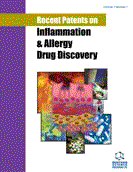Abstract
Antimicrobial peptides (AMPs) constitute a diverse group of compounds that serve a common goal that is host organism defense from infection. Due to their antimicrobial properties, these molecules attract practical interest as potential antibiotics for medical and veterinary use as well as enhancers of plant disease resistance for agriculture. Broad AMP utilization is restricted by the expensiveness of their production using conventional chemical synthesis. For this reason, a number of chimeric genes have been developed for recombinant AMP production in prokaryotes. However, recombinant peptide instability and/or high toxicity to host cells dramatically reduce the yields. In this paper, we review patented strategies of fusion protein design for AMP production. In several cases, the proposed strategies clearly mimic the organization of natural AMP precursor proteins. We describe the main principals of natural AMP precursor organization and fusion constructs adopted and/or artificially designed by man.
Keywords: Antimicrobial peptides, protein precursor structure, fusion proteins, recombinant polypeptide production, expression systems
 32
32


















